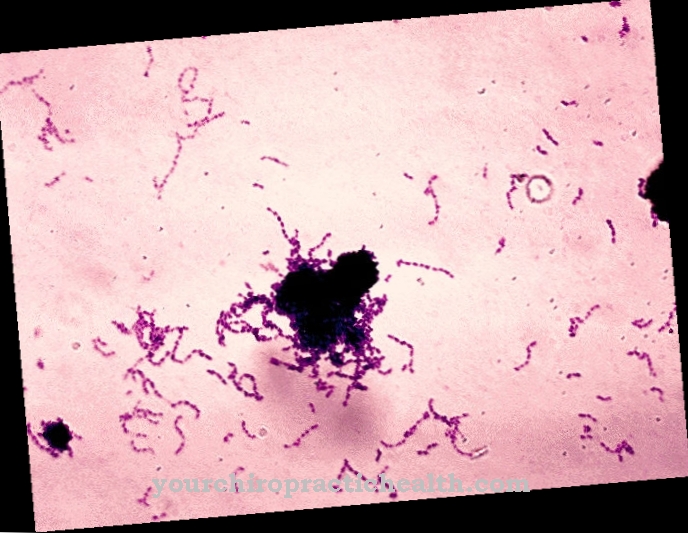Wuchereria bancrofti is the name of a nematode species. It is a parasite that attacks human lymph vessels.
What is Wuchereria bancrofti?
Wuchereria bancrofti is a parasite that belongs to the group of roundworms (nematodes). Like other roundworm species, such as Brugia timori and Brugia malayi, it is able to colonize the human lymphatic system and cause damage to health. Around the globe, an estimated 80 to 120 million people suffer from lymphatic filariasis. This condition is caused by Wuchereria bancrofti in nine out of ten cases.
The name Wuchereria bancrofti goes back to the German-Brazilian physician Otto Wucherer (1820-1873), who discovered the nematode in a patient's urine in 1856. He determined that the parasite was responsible for the outbreak of lymphatic filariasis. Another discoverer is the British-Australian parasitologist John Bancroft (1836-1884), who also served as the namesake.
Occurrence, Distribution & Properties
The distribution areas of Wuchereria bancrofti are primarily China, Central and South America, the Caribbean, Africa and the Pacific region. There the roundworms can be found in tropical climes. In Germany there is only very rare infestation with the filariae, which are usually transmitted in the risk areas described.
Male specimens of the Wuchereria bancrofti reach a size between 2.4 and 4 centimeters. The females even reach a size of 5 to 10 centimeters. However, they are only 0.3 millimeters thick. The microfilariae (larvae) are equipped with a seedless tail end. Their maximum size is between 250 and 300 micrometers. The parasites usually live a maximum of eight years. The prepatency period, i.e. the period between infection and detection of the parasite's reproduction products, is around nine months.
Mosquitoes serve as intermediate hosts for the Wuchereria bancrofti. These include especially the mosquito species Anopheles, Aedes and Culex. The mosquitoes transmit the parasites to humans during the biting process. The roundworm cannot survive outside of mosquitoes and humans. If a mosquito bites someone who is already infected, the mosquito suckles in tiny larvae that are in the human blood. During the subsequent stinging process, the parasites then pass on to another person, where they penetrate the lymph nodes and lymph vessels. They stay there for about nine months and develop into full-grown filariae.
Overall, worms in the lymphatic system can survive for several years. During this period, countless new microfilariae are produced by their females. The transfer to the peripheral blood takes place especially at night. In this area they can infect a mosquito again. The microfilariae are able to adapt to the stinging habits of the insects, which prefer to haunt humans at night.
Illnesses & ailments
Wuchereria bancrofti is one of the harmful parasites and can cause more or less serious diseases. The mild forms of the disease include lymphadenitis (pathological swelling of the lymph nodes) and lymphangitis (inflammation of the lymphatic ducts). In severe cases, there is a risk of lymphatic filariasis.
Most of the sick live in India and Africa and represent a third of all patients. The other cases of the disease are recorded in the south of Asia, in Pacific countries and South America. The World Health Organization (WHO) classifies 1.1 billion people as at risk for an infestation with Wuchereria bancrofti.
The first symptoms from the roundworms appear a few weeks or even several months after the infection with the parasites. During the acute phase, affected individuals experience chills, fever, and swollen lymph nodes. It is not uncommon for feet or legs to swell. Both unilateral and bilateral complaints are possible.After a few days the symptoms improve and the skin begins to flake. In some patients, the swelling shows up several times.
Lymphatic filariasis is not always associated with a fever. If, however, a fever occurs, this is regarded as a reaction of the organism to dead nematodes within the lymph nodes or lymphatics. In males, fluid can accumulate on the genitals.
If the roundworms stay in the human body for a long time, there is a risk of chronic lymphatic filariasis, in the course of which lymphedema often develops. In the case of such lymphatic congestion, doctors speak of elephantiasis (elephant syndrome), which primarily affects the groin area, feet and legs. The chest, arms and genitals are less affected. Some patients also have rheumatoid problems such as myositis (inflammation of the muscles) or arthritis. Another characteristic is a milky, cloudy coloration of the urine.
In some people, however, an infestation with Wuchereria bancrofti does not cause any symptoms at all.
A blood smear can be used to detect Wuchereria bancrofti in the human body. In some cases, the blood is taken at night for this purpose, as the parasites are in parts of the body that are infested by mosquitoes during this period.
To combat Wuchereria bancrofti, anthelmintics such as ivermectin are used. This means the microfilariae can be killed. Albendazole or diethylcarbamazine (DEC) can be administered as additional drugs. In this way the positive effect of the treatment is increased.














.jpg)





.jpg)

.jpg)





